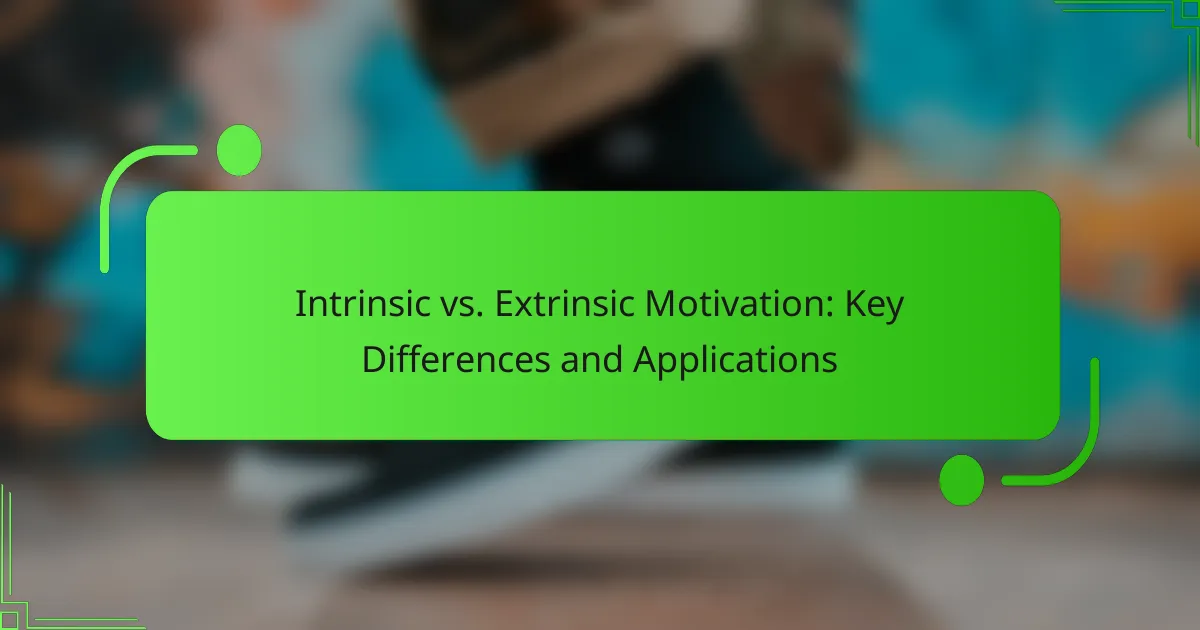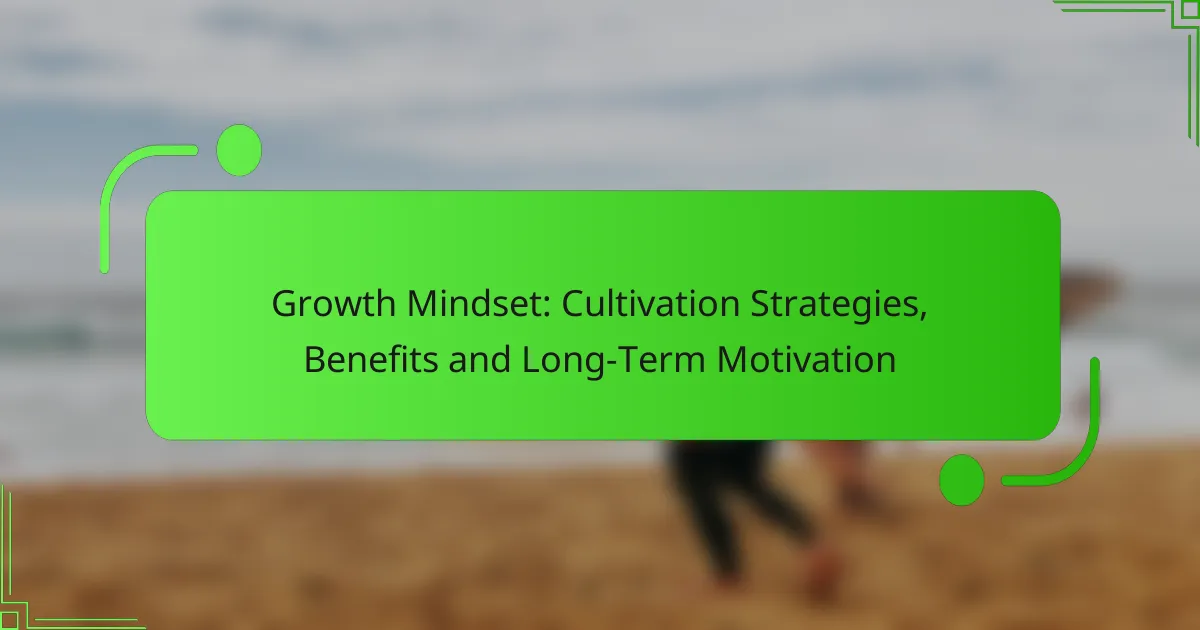Understanding the distinction between intrinsic and extrinsic motivation is crucial for enhancing performance and engagement in various settings. Intrinsic motivation stems from internal satisfaction and personal interest, while extrinsic motivation relies on external rewards and pressures. By recognizing these differences, organizations can implement effective strategies tailored to foster both types of motivation, ultimately leading to improved productivity and commitment among employees.
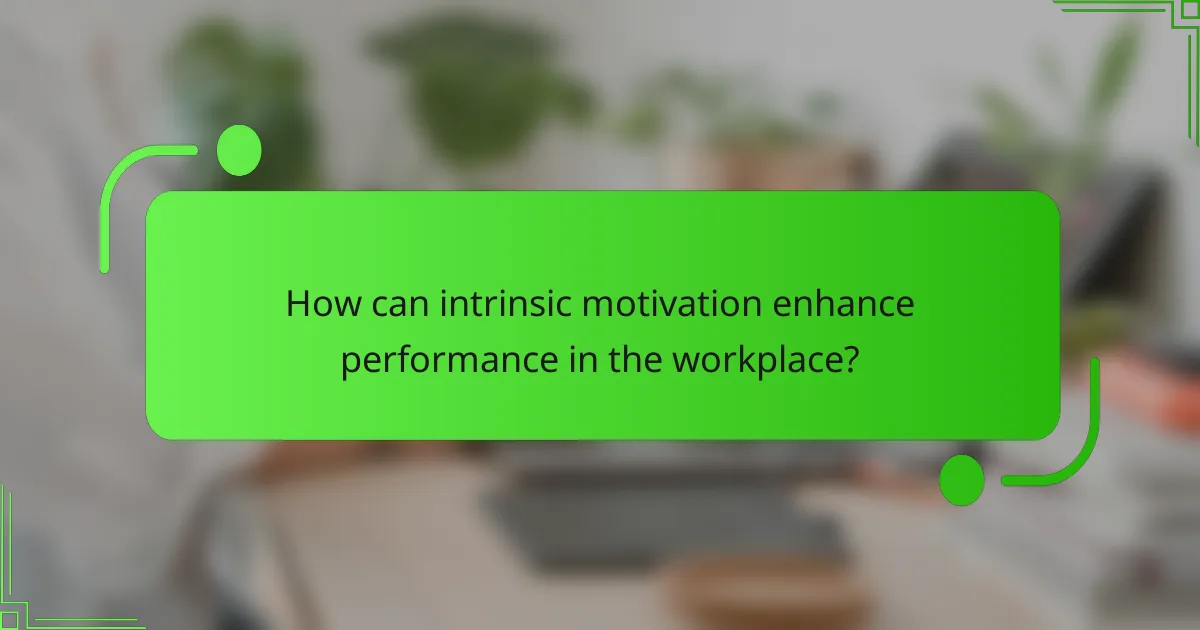
How can intrinsic motivation enhance performance in the workplace?
Intrinsic motivation can significantly boost workplace performance by fostering a deeper connection to tasks and responsibilities. When employees are driven by internal rewards such as personal growth and fulfillment, they tend to be more productive and committed to their work.
Increased employee engagement
Intrinsic motivation leads to higher levels of employee engagement, as individuals feel a genuine interest in their work. Engaged employees are more likely to invest time and effort, resulting in better collaboration and productivity.
To cultivate engagement, organizations can provide opportunities for skill development and encourage autonomy in decision-making. This can create a sense of ownership that enhances motivation.
Higher job satisfaction
Employees who are intrinsically motivated often report greater job satisfaction. When individuals find meaning in their work, they are less likely to experience burnout and more likely to stay with the company long-term.
Employers can enhance job satisfaction by aligning tasks with employees’ interests and values, ensuring that work feels relevant and rewarding. Regular feedback and recognition of achievements can further reinforce this satisfaction.
Improved creativity and innovation
Intrinsic motivation fosters an environment conducive to creativity and innovation. When employees are driven by personal interest, they are more likely to explore new ideas and take risks without fear of failure.
To stimulate creativity, organizations should encourage brainstorming sessions and allow for flexible work arrangements. Providing resources for professional development can also inspire innovative thinking.
Greater resilience to challenges
Intrinsic motivation equips employees with greater resilience when facing challenges. Individuals who are internally motivated are more likely to view obstacles as opportunities for growth rather than setbacks.
To build resilience, companies can promote a growth mindset and support employees in setting personal goals. Encouraging a culture of learning from mistakes can help employees navigate difficulties more effectively.

What are effective strategies to foster extrinsic motivation?
Effective strategies to foster extrinsic motivation include implementing performance-based bonuses, recognition programs, career advancement opportunities, and competitive salary structures. These approaches can enhance employee engagement and productivity by providing tangible rewards for specific achievements.
Performance-based bonuses
Performance-based bonuses are financial incentives awarded to employees for meeting or exceeding predefined goals. These bonuses can range from a few hundred to several thousand dollars, depending on the organization and the achievement level. To maximize effectiveness, ensure that the goals are clear, measurable, and attainable.
Consider structuring bonuses to align with both individual and team performance to foster collaboration. Regularly review and adjust the criteria to keep them relevant and motivating.
Recognition programs
Recognition programs acknowledge employees’ efforts and achievements, often through awards, certificates, or public acknowledgment. These programs can significantly boost morale and motivation by making employees feel valued. Simple gestures, such as shout-outs in team meetings or a dedicated “Employee of the Month” program, can be effective.
To enhance these programs, personalize recognition to fit individual preferences and ensure consistency in how achievements are celebrated across the organization.
Career advancement opportunities
Providing career advancement opportunities is a powerful way to foster extrinsic motivation. Employees are more likely to stay engaged when they see a clear path for growth within the organization. This can include promotions, mentorship programs, or additional training and development resources.
Encourage employees to set career goals and regularly discuss their progress during performance reviews. This not only motivates them but also helps align their aspirations with the organization’s objectives.
Competitive salary structures
Implementing competitive salary structures is essential for attracting and retaining talent. Research industry standards to ensure that your compensation packages are aligned with market rates. Regularly review salaries to remain competitive, considering factors like experience, location, and job responsibilities.
In addition to base salaries, consider offering benefits such as health insurance, retirement plans, and flexible working arrangements to enhance overall compensation and motivate employees to perform at their best.
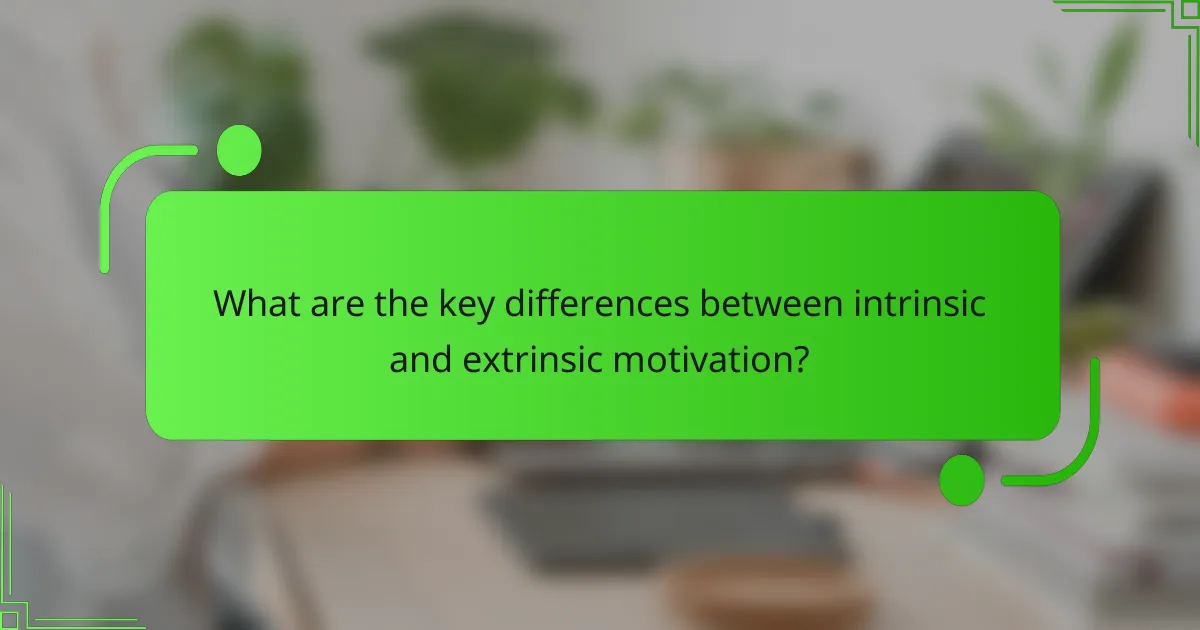
What are the key differences between intrinsic and extrinsic motivation?
Intrinsic motivation arises from internal satisfaction and personal interest, while extrinsic motivation is driven by external rewards or pressures. Understanding these differences can help in applying the right motivational strategies in various settings.
Definition and examples
Intrinsic motivation refers to engaging in an activity for its own sake, driven by personal enjoyment or fulfillment. For example, a person who reads a book purely for pleasure is intrinsically motivated.
On the other hand, extrinsic motivation involves performing an activity to earn rewards or avoid negative consequences. An example would be a student studying hard to receive good grades or praise from parents.
Impact on behavior and performance
Intrinsic motivation generally leads to higher levels of engagement and creativity, as individuals are more likely to explore and persist in tasks they find enjoyable. This can result in deeper learning and better problem-solving skills.
Conversely, extrinsic motivation can effectively drive short-term performance, particularly in structured environments. However, it may lead to a decrease in intrinsic interest over time if the external rewards are removed or perceived as insufficient.
Long-term vs. short-term effects
Intrinsic motivation tends to foster long-term commitment and satisfaction, as individuals develop a genuine interest in their activities. This can lead to sustained effort and personal growth over time.
Extrinsic motivation, while effective for achieving immediate goals, may not support long-term engagement. Relying heavily on external rewards can diminish intrinsic motivation and lead to burnout or disengagement in the long run.
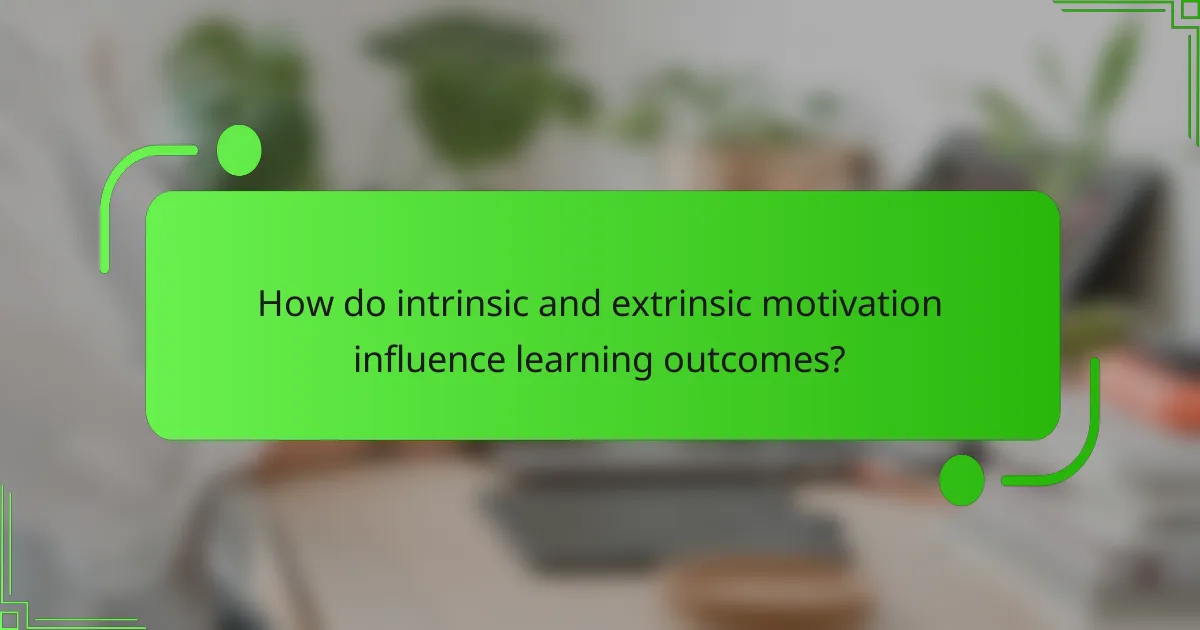
How do intrinsic and extrinsic motivation influence learning outcomes?
Intrinsic and extrinsic motivation significantly impact learning outcomes by shaping how individuals engage with material. Intrinsic motivation fosters a genuine interest in learning, while extrinsic motivation often leads to performance driven by external rewards.
Intrinsic motivation promotes deeper learning
Intrinsic motivation encourages learners to engage with content for personal satisfaction and curiosity. This type of motivation often results in a deeper understanding of the subject matter, as learners explore concepts beyond surface-level knowledge.
For example, a student who is intrinsically motivated may spend extra time researching a topic because they find it fascinating, leading to enhanced retention and application of knowledge. To cultivate intrinsic motivation, educators can create a supportive environment that emphasizes autonomy, relevance, and mastery.
Extrinsic motivation can drive immediate results
Extrinsic motivation can effectively produce quick results by leveraging external rewards such as grades, praise, or prizes. This approach often leads to increased effort and focus, especially in structured learning environments where clear goals are set.
However, while extrinsic rewards can boost short-term performance, they may not sustain long-term engagement or interest in learning. Educators should balance extrinsic incentives with opportunities for intrinsic motivation, ensuring that learners develop a lasting passion for their subjects.

What role does culture play in motivation types?
Culture significantly influences motivation types by shaping how individuals perceive intrinsic and extrinsic rewards. In individualistic cultures, personal achievement is often prioritized, while collectivist cultures emphasize group harmony and shared success.
Individualistic vs. collectivist cultures
In individualistic cultures, such as the United States and many Western European nations, motivation tends to stem from personal goals, self-fulfillment, and individual recognition. People are often driven by intrinsic factors like personal satisfaction and the desire for autonomy.
Conversely, collectivist cultures, found in regions like East Asia and parts of Africa, focus on group goals and community well-being. Here, extrinsic motivation, such as social approval and collective success, plays a more significant role, as individuals are motivated to contribute to the group’s harmony and achievements.
Variations in motivational strategies
Motivational strategies can vary widely between cultures. In individualistic societies, strategies may include setting personal milestones and rewarding oneself for achievements. This can foster a strong sense of personal responsibility and drive.
In collectivist cultures, effective strategies often involve group incentives and collaborative goal-setting. For example, team-based rewards can enhance motivation by fostering a sense of belonging and shared purpose. Understanding these cultural differences can help in tailoring motivational approaches to fit the specific context and audience.
